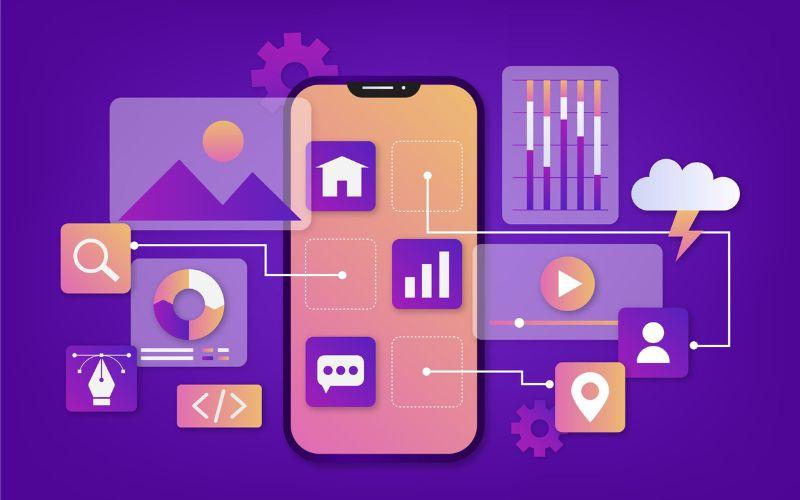In today’s digital world, the demand for video streaming apps has skyrocketed. With the success of platforms like Netflix, Hulu, and Disney+, many businesses and entrepreneurs are keen to learn how to create a video streaming app. Whether you’re planning to launch a subscription-based service, an ad-supported model, or a free streaming platform, this comprehensive guide will walk you through the essential steps to bring your vision to life.
Why Build a Video Streaming App?
Before diving into the technical aspects, it’s important to understand why creating a video streaming app is a lucrative venture. The global video streaming market is projected to exceed $223 billion by 2028, driven by increasing smartphone usage, affordable internet access, and evolving consumer preferences for on-demand content. Here’s what makes video streaming apps so popular:
- Convenience: Users can access content anytime, anywhere.
- Diverse Monetization Options: From subscriptions to ads, there are multiple revenue streams.
- Personalization: Advanced algorithms allow for tailored recommendations, enhancing user engagement.
Whether for education, entertainment, or fitness, video streaming apps cater to a wide range of niches.
Step 1: Define Your Target Audience and App Type
The first step in learning how to create a video streaming app is understanding your audience. Are you targeting sports fans, movie enthusiasts, or learners? Defining your niche helps in deciding the content type and app features.
App Types:
- Live Streaming Apps: Ideal for broadcasting events in real-time, like Twitch.
- On-Demand Streaming Apps: Platforms like Netflix and Hulu allow users to watch content at their convenience.
- Video Hosting Apps: Examples include YouTube, where users upload their own content.
Step 2: Choose a Monetization Model
Monetization is a critical aspect of building a sustainable streaming platform. Here are the most popular models:
- Subscription-Based (SVOD): Users pay a monthly or yearly fee for unlimited access.
- Ad-Supported (AVOD): Free for users but supported by ad revenue.
- Pay-Per-View (TVOD): Users pay for specific content.
- Freemium: A mix of free and premium features.
Selecting the right model depends on your audience’s preferences and market competition.
Step 3: Design User-Friendly Features
Creating a seamless user experience is key to retaining viewers. While building how to create a video streaming app, consider integrating these essential features:
- User Registration & Profiles: Allow users to create accounts and personalize profiles.
- Content Library: Organize videos into categories for easy navigation.
- Search and Filters: Implement smart search with filters for genres, ratings, or release dates.
- Recommendations: Use AI algorithms to suggest relevant content based on viewing history.
- Offline Mode: Enable users to download videos for offline viewing.
- Multi-Platform Support: Ensure compatibility with mobile devices, smart TVs, and desktops.
- Secure Payment Gateways: If monetized, provide secure options like PayPal or Stripe.
Step 4: Select the Right Tech Stack
The backbone of your app lies in its technology stack. Here’s an overview of what you’ll need:
- Programming Languages: Use Swift/Objective-C for iOS, Kotlin/Java for Android, and React or Flutter for cross-platform apps.
- Video Hosting: AWS, Vimeo, or Brightcove are popular options.
- Streaming Protocols: Consider HTTP Live Streaming (HLS) for adaptive streaming.
- Database Management: Use MySQL, MongoDB, or PostgreSQL for scalable data storage.
- CDN Integration: Content Delivery Networks like Akamai or Cloudflare ensure smooth streaming without buffering.
Step 5: Develop and Test Your App
Now comes the development phase, where you transform your ideas into a functioning app. This process involves:
- Front-End Development: Focus on creating an intuitive and responsive user interface.
- Back-End Development: Build a robust server to manage content delivery, user data, and payment systems.
- Integration: Connect third-party services such as payment gateways, video players, and CDNs.
- Testing: Test for performance, scalability, and user experience on various devices and operating systems.
Step 6: Launch and Market Your App
After successfully building how to create a video streaming app, the next step is launching and promoting it to your target audience. Follow these strategies:
- Soft Launch: Release a beta version for feedback.
- App Store Optimization (ASO): Optimize your app listing with relevant keywords, screenshots, and descriptions.
- Social Media Marketing: Leverage platforms like Instagram and YouTube to generate buzz.
- Influencer Partnerships: Collaborate with influencers for greater reach.
- Email Campaigns: Send targeted emails to potential users with enticing offers.
Step 7: Analyze and Improve
Your journey doesn’t end at launch. Use analytics tools like Google Analytics or Mixpanel to track user engagement, retention rates, and performance metrics. Gather feedback regularly to improve your app and introduce new features based on user preferences.
Conclusion
Learning how to create a video streaming app involves careful planning, robust development, and strategic marketing. By understanding your target audience, selecting the right tech stack, and focusing on user experience, you can create a streaming platform that stands out in the competitive market. With the right execution, your app could become the next big success story in the video streaming industry.



